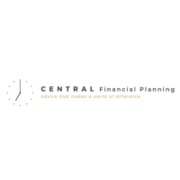KiwiSaver is changing: What you need to know (sponsored)
Dewald de Beer l Financial Advice contributor
18 June 2025, 5:00 PM

Budget 2025 introduced a range of changes to KiwiSaver that aim to boost long-term retirement savings, particularly for younger workers.
At Central Financial Planning, we believe these changes present both opportunities and challenges. Now more than ever, it’s essential to understand how the rules affect you, your ideal future, and your finances.
What’s Changing?
1. Contribution Increases (Phased In):
From 1 April 2026, the default employee and employer contribution rates will increase from 3% to 3.5%, and then to 4% by April 2028. While employees will have the option to remain at 3% in the short term, this change represents a shift in the default savings culture, nudging all working New Zealanders to put more toward their retirement.
2. Government Contributions Adjusted:
The Government’s contribution will be halved from $521 to $261 per year starting 1 July 2025.
High-income earners (those earning over $180,000) will no longer be eligible for this annual top-up.
But good news for younger workers, 16- and 17-year-olds will now become eligible for both government and employer contributions, starting July 2025 and April 2026 respectively.
A Mixed Bag for Savers and Employers
At Central Financial Planning, we support initiatives that help New Zealanders build better financial futures. Increasing the default contribution rate is a step in the right direction for long-term retirement security.
A 4% contribution, from both employee and employer, can make a significant difference over a 30–40 year working life.
However, reducing the government’s contribution and removing it altogether for higher earners sends a mixed message. Many clients have come to rely on that top-up as part of their savings strategy.
The reduction may also disproportionately affect lower- to middle-income savers, who benefit most from the relative boost it provides.
For employers and small businesses, the phased increases in compulsory contributions may present budgetary challenges, especially in tighter economic environments.
We recommend business owners factor these changes into their long-term payroll and cashflow planning early.
Don’t Miss Out on Your Government Contribution
With the government contribution reducing from 1 July, now is a great time to review your KiwiSaver account to make sure you’ve contributed enough to receive the full entitlement this year.
To receive the full $521.43 government top-up, you need to contribute at least $1,042.86 of your own money between 1 July and 30 June. If you haven’t hit that target yet, there’s still time to top up before the deadline.
Young Savers Benefit, and That’s a Good Thing!
One of the most encouraging shifts is the inclusion of 16- and 17-year-olds in the KiwiSaver incentives.
This change gives young people a genuine head start — not just in financial contributions, but in cultivating good saving habits early.
With employer and government support, the compounding benefits of long-term investment can start making a real difference from a younger age.
What’s Next? A Possible Shift in the Retirement Age
While not part of this Budget, there’s ongoing conversation about raising the age of eligibility for NZ Superannuation.
If the retirement age shifts from 65 to 67 or beyond in future years, this may also influence when you can access your KiwiSaver funds.
It’s important to understand how these broader policy moves could interact with your retirement planning.
Now is the Time to Get Advice
At Central Financial Planning, some of our core values are transparency, trust, and proactive engagement to equip people with knowledge to help them make confident, wise and informed decisions.
These changes mean more of your income will be going into your KiwiSaver. That makes it even more important to ensure you’re invested in the right solutions, with the right strategy for your goals and life stage.
Ask questions. Check your settings. Top up your account if needed.
Understand your fund type. If you’re unsure where to start, reach out. We’re here to guide you, because it’s your future, and it’s worth getting right.



